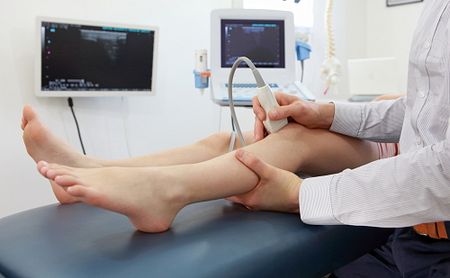Diabetes Co-occurring With CMT1A Led to Misdiagnosis
Written by |

A man with a rare case of diabetes complicating Charcot-Marie-Tooth disease (CMT) had a recurrent foot ulcer that originally was misdiagnosed as diabetic foot.
That finding in a case report describes how the overlap in symptoms from the two conditions can be challenging, and how treating the ulcer with a simple offloading device resulted in sustained therapeutic benefit.
The report, “Diabetes coexistent with Charcot‐Marie‐Tooth disease presenting as a recurrent foot ulcer misdiagnosed as diabetic foot: a case report,” was published in the Journal of Diabetes Investigation.
Diabetes can involve the loss of sensation, stemming from nerve damage known as diabetic peripheral neuropathy (DPN). CMT also is a type of peripheral neuropathy and its symptoms can mimic those of diabetes, as in the case of losing sensation in the extremities (hands and feet).
DPN can cause diabetics not to notice minor infections and small wounds on their feet, allowing these to grow into severe infections and ulcers, a condition commonly known as “diabetic foot.” It is a serious complication that can result in amputation and a greater risk of death.
Proper treatment relies on accurately diagnosing the condition’s underlying cause, which can be complicated when disorders with substantial symptomatic overlap.
Doctors at Sichuan University’s West China Hospital encountered this challenge in the case of a 38-year-old man with simultaneous CMT and diabetes, who arrived at hospital seeking treatment for a recurring foot ulcer.
Diagnosed with diabetes in 2013, the man chose not to undergo diabetic treatment or blood sugar monitoring. Since 2016, he had experienced excessive urination, numbness in his lower limbs, and a reduced ability to feel pain and temperature changes.
Although he had been prescribed metformin and methylcobalamin (a form of vitamin B12), his symptoms did not ease and he developed a recurrent ulcer on his right foot. This ulcer occurred again in 2019, when he was referred to the West China Hospital.
At the time, the team saw a 1-centimeter-in-diameter ulcer on the patient’s right foot, along with slight atrophy (wasting) in the muscles of his thumb and lower limbs.
Although diabetes can cause damage to the blood vessels at the back of the eye (the retina), the patient’s retina appeared normal. Electromyography tests, however, revealed nerve damage in all four limbs and especially the lower limbs, with “severe injuries to motor and sensory [nerve] fibers,” the team wrote.
Imaging tests — X-ray and MRI — further revealed osteoporosis (weak bones) of both feet and extensive accumulation of fat in the muscles, signs of CMT and diabetes, respectively.
The test results prompted doctors to perform genetic testing, which revealed a duplication of the PMP22 gene, indicating CMT type 1A (CMT1A) and leading to the combined diagnoses of CMT1A and type 2 diabetes.
The patient received a removable, knee-high offloading device, which is used to prevent ulcer relapse by allowing the patient to put less pressure on the affected foot. After this approach, the man’s ulcer had not returned during one year of follow-up.
The team pointed out that diabetes rarely co-occurs with CMT1A. When it does, however, diabetes can make a CMT1A case worse, although exactly how and why remains unknown.
While there is no specific medicine to treat CMT yet, the team suggested that “offloading devices and a desirable comprehensive management of [diabetes] may be beneficial to avoid plantar [bottom of the foot] ulcer recurrence and anti-progression of CMT.”




